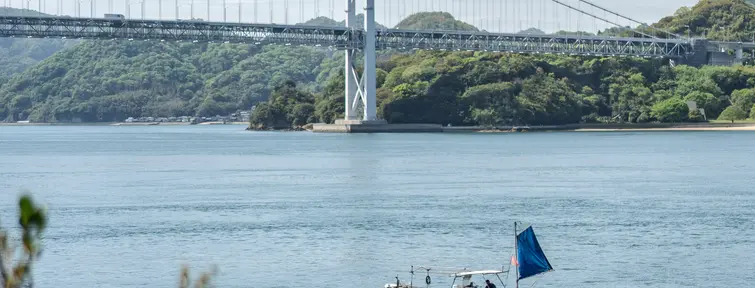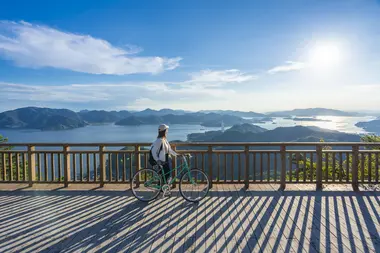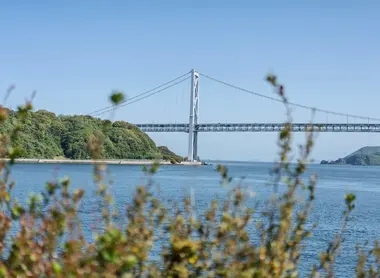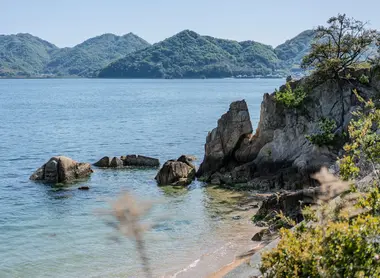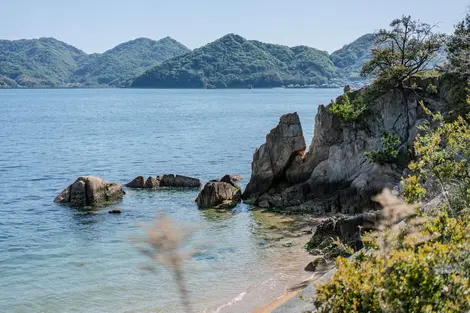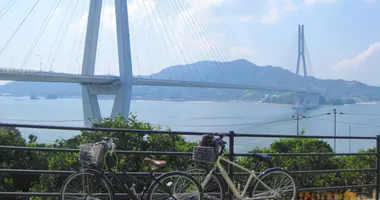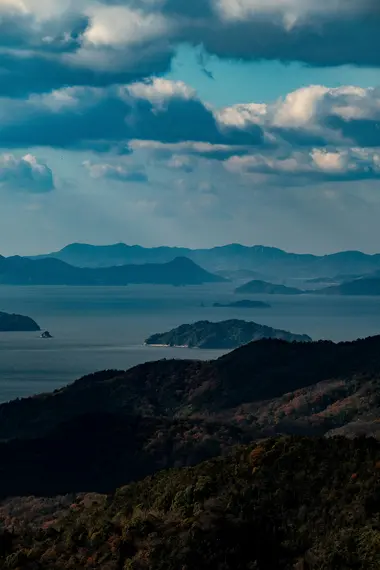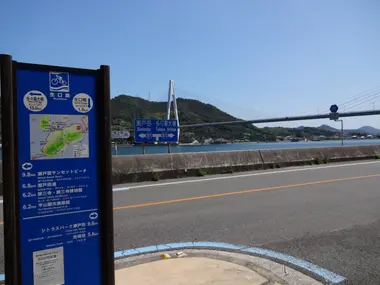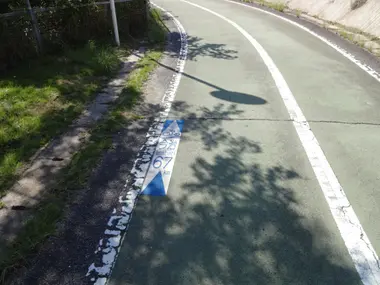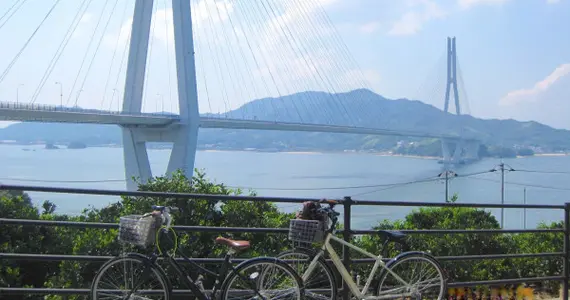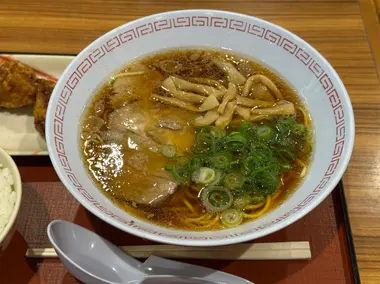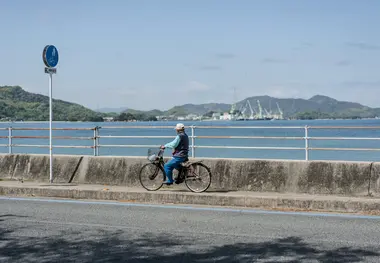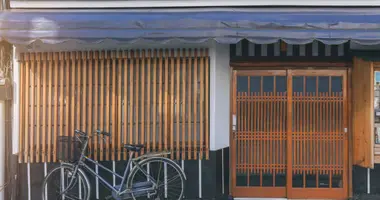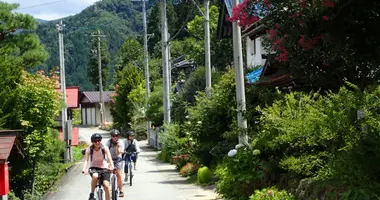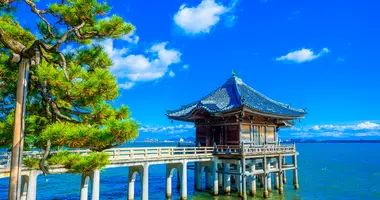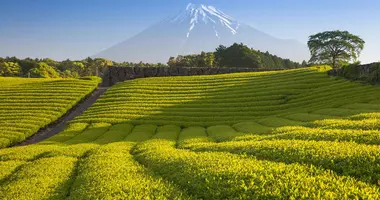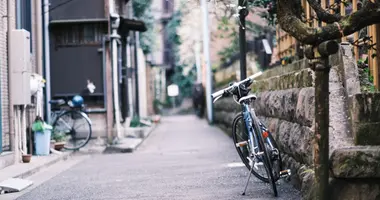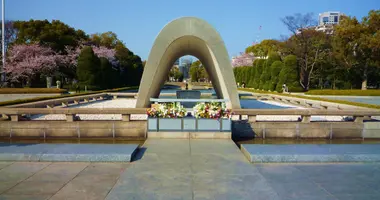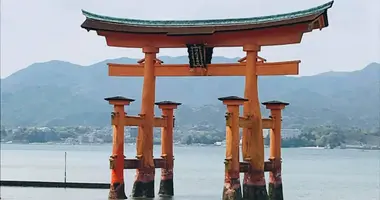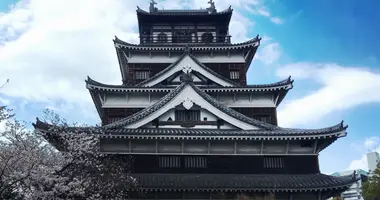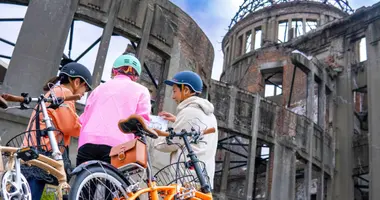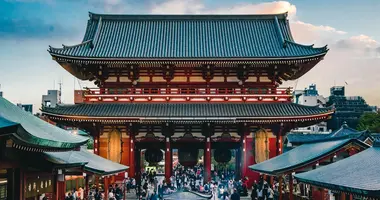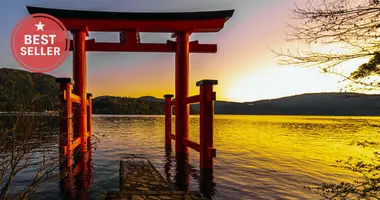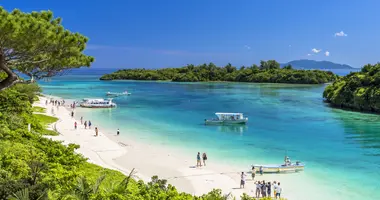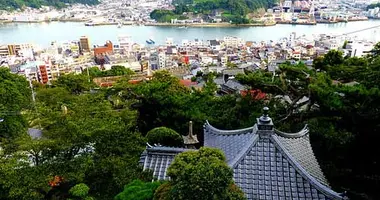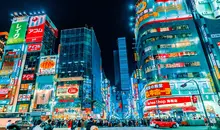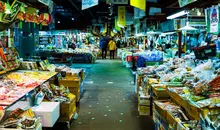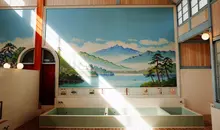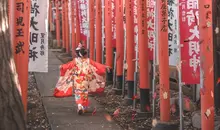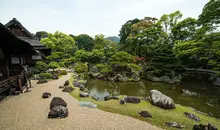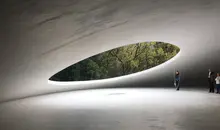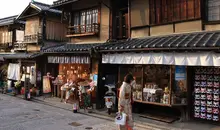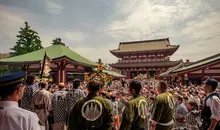The Shimanami Kaido: A Journey Through the Seto Islands!
- Published on : 05/07/2025
- by : J.L.
- Youtube
Cycling by the Seto Sea
The Shimanami Kaido is an emblematic 70-kilometer route linking Onomichi on the island of Honshu to Imabari on the island of Shikoku. Inaugurated in 1999, this exceptional cycle path crosses six small islands and seven spectacular bridges over the Seto Inland Sea. Nicknamed the"cyclist's holy land" by enthusiasts, it offers a unique immersion in rural and maritime Japan. Whether you're an experienced sportsman or a traveler in search of new discoveries, the Shimanami Kaido allows you to contemplate breathtaking coastal landscapes, picturesque fishing villages and abundant citrus orchards.
Introducing the Shimanami Kaido and its route
The Shimanami Kaido is much more than just a bicycle path. This exceptional route, completed in 1999, links the main island of Honshu to Shikoku, crossing the Seto Inland Sea. Its unique route allows cyclists, pedestrians and motorists alike, to travel from island to island through a breathtaking seascape.
The route passes through six islands: Mukaishima, Innoshima and Ikuchijima in Hiroshima prefecture, then Omishima, Hakatajima and Oshima in Ehime prefecture. These islands are linked by seven majestic bridges, including the Kurushima Kaikyo Bridge, the world's first triple suspension bridge at 4,100 metres long. Each bridge offers exceptional panoramic views of the Inland Sea and surrounding islands.
The special feature of this route is its accessibility. Unlike most Japanese highways, the Shimanami Kaido has specially designed lanes for cyclists, marked by a continuous blue line along its entire length. This allows travellers to concentrate on the beauty of the scenery as it passes before their eyes, rather than on orientation.
Experienced cyclists can cover the entire route in 3 to 4 hours, while visitors wishing to take full advantage of the experience will take a full day, or even several days, to explore the cultural and natural riches of the islands crossed.
How to get to Onomichi and prepare for your cycling adventure
Onomichi, the usual departure point for the Shimanami Kaido, is easily accessible from all major Japanese cities. From Hiroshima, allow around 1h20 by local train via Mihara station. If you're coming from Tokyo, Osaka or Kyoto, first take the Shinkansen to Fukuyama, then the local train (20 minutes) to Onomichi.
Once in Onomichi, this picturesque port town is well worth a visit. Famous for its many temples linked by a pilgrimage path and steep alleyways offering breathtaking sea views, Onomichi was the setting for Ozu Yasujirô's film "Voyage à Tokyo". Don't miss the Onomichi Cat Walk, a winding trail that takes you through the town and its many felines.
Explore Shimanami Kaido and discover its treasures!
Before starting your Shimanami Kaido adventure, you'll need to rent a bike. You have several options:
- The 14 official rental stations along the route offer standard bikes at 1,000 yen per day (with a 1,000 yen deposit).
- Onomichi U2, a modern facility housed in a former shipping warehouse, offers high-end professional bikes from 4,000 yen. This unique venue also includes accommodation where you can sleep with your bike, a restaurant and a repair shop.
- For added convenience, electric-assist bicycles are available for 1,500 yen for 6 hours, ideal for tackling bridge climbs without excessive effort.
To reach Mukaishima Island from Onomichi: Take a ferry from the pier opposite the station (5-minute trip for 100 yen, plus 10 yen for the bike). It's on this first island that the bike path officially begins, indicated by a blue line that you'll follow along the way.
The islands and attractions of Shimanami Kaido
Each island on the Shimanami Kaido has its own character and unique attractions, offering travelers an immersion in authentic rural and maritime Japan.
Mukaishima, the first stop on your journey, welcomes you with its peaceful ambience. Don't miss the historic Sumida bakery, founded in 1916, for an invigorating breakfast before continuing on your way.
Innoshima, linked to Mukaishima by a 1,270-meter double-decker bridge, is known for two specialties: hassaku oranges (a grapefruit-sized variety) and its historical pirate heritage. Suigun Castle, built in 1983, houses a museum dedicated to the Murakami naval clan, active in the region between the 14th and 16th centuries. Another local curiosity is hassaku daifuku, a delicious pastry in which orange is wrapped in white bean paste and mochi.
Ikuchijima is nicknamed "Lemon Island" and is famous for its octopus fishing. There are two ways to get there, from the north or south, both along the palm-fringed sea. The north offers more attractions, notably the Kojo-ji temple with its three-storey pagoda and panoramic sea view. For those with a sweet tooth, the Dolce ice cream parlour offers sorbets made with local fruits, including Ikuchijima lemon.
Omishima, the course's largest island, can be reached via the magnificent Tatara cable-stayed bridge. The island is dominated by the Ôyamazumi-jinja shrine, dedicated to the brother of Amaterasu, protective deity of sailors and soldiers. This shrine is home to 80% of Japan's historic cultural heritage, including that of Minamoto no Yoritomo (1147-1199). To relax after your exertions, the onsen of Tatara Onsen awaits you.
Hakatajima, a small island renowned for its high-quality salt, can be quickly crossed or explored via a 17 km circuit around its fishing ports. Mount Hirakiyama (149 m) offers 360° panoramic views.
Oshima, the last island before Imabari, offers several itineraries, including a complete 35 km tour. In Yoshiumi Park, 3,500 roses bloom from May to December. For experienced cyclists, Mount Kirosan (307 m) offers an exceptional panorama of the Kurushima Strait. From here, you can take the Kurushima Kaikyô Bridge, comprising three suspension bridges totalling four kilometers in length, 65 metres above the sea.
Route options and bike hire
The Shimanami Kaido offers great flexibility in the organization of your cycling trip, accommodating both seasoned sportsmen and amateurs wishing to enjoy the scenery at their own pace.
Several route options are available:
- The complete route (70 km) from Onomichi to Imabari, achievable in one day for trained cyclists (4-5 hours of effective pedaling).
- The same route spread over two days, with an overnight stay on one of the islands, ideal for enjoying the attractions to the full.
- Partial tours, visiting only certain islands and then returning to your starting point.
- The reverse itinerary, from Imabari to Onomichi (more difficult at first, due to the steep climbs near Imabari).
The route is particularly well laid out for cyclists:
- A blue line painted on the ground guides you along the route.
- Signposts indicate the remaining distances to Imabari.
- Cycling oases" provide refreshments and air for tires.
- An assistance service (Wakka) is available in case of mechanical problems or fatigue.
Discover the landscapes of the Seto Sea!
Accommodation and local gastronomy along the route
One of the treasures of the Shimanami Kaido is the opportunity to stay on the islands and discover the local gastronomy, for a complete immersion in the culture of this maritime region.
A variety of accommodation options allow you to create a tailor-made itinerary:
- Traditional ryokan offer an authentic experience with tatami mats, futons and sometimes thermal baths (onsen).
- Modern hotels in Imabari or Onomichi offer all the comforts of the West.
- Budget inns offer affordable accommodation.
- Yubune on Ikuchijima, a public bath that also offers rooms where cyclists can keep their bikes, offers an immersion in local life.
- For a more luxurious experience, LEMON FARM GLAMPING Shimanami on Ikuchijima offers eight glamping facilities overlooking the sea.
- Campsites are also available on each island for travellers on a tight budget.
- The unusual HOTEL CYCLE on Onomichi U2 allows you to check in with your bike and even bring it into your room.
Local gastronomy is another highlight of the trip, with each island having its own specialities:
- Citrus fruits are omnipresent: hassaku oranges from Innoshima, lemons from Ikuchijima, mikan mandarins... They can be enjoyed fresh or processed into desserts, juices and even beer.
- Innoshima's hassaku daifuku, where the orange is wrapped in white bean paste and mochi.
- Octopus from Ikuchijima, prepared in a variety of ways in local restaurants.
- Hakata salt, used in many specialties such as salt ramen.
- Lemon nabe, a photogenic dish from Ikuchijima where fresh ingredients from the sea are covered with a multitude of lemons.
Practical tips to make the most of your experience
To ensure that your adventure on the Shimanami Kaido is a success, here are a few practical tips to help you make the most of it:
When to go?
- The best periods are spring (March-May) and autumn (September-November), when temperatures are mild and the sky is generally clear.
- Avoid summer (June-August), which can be very hot and humid, making physical exertion more difficult.
- Winter can be cool, but still passable, with the advantage of fewer visitors.
- Check the weather forecast before you leave, even if it's not always reliable in the long term in this maritime region.
A few tips:
- If you're not an experienced cyclist, practice a little before you go.
- Use the luggage delivery service (takkyubin) to travel light.
- Book your accommodation in advance, especially at weekends and during vacation periods.
- Plan regular breaks to take in the sights.
- Follow the blue line painted on the ground, which will guide you along the route.
- Follow the Japanese highway code: drive on the left and moderate your speed on downhill stretches.
- Don't hesitate to deviate from the main route to explore small ports and villages.
- If you have any problems, contact the Wakka bicycle assistance service or the emergency services (110 for police, 119 for medical).
For those wishing to extend their cycling experience, the region offers other interesting cycling routes:
- The Tobishima Kaido, less well known than the Shimanami Kaido but just as picturesque, traverses other islands in the Inland Sea. Located to the west of the Inland Sea, the two routes can be easily reached by connecting ferries. Heavenly beaches, typical Japanese houses, panoramic views of the Seto Sea... Tobishima Kaido offers a wide range of sights and wonders to discover!
- The Yumeshima Kaido, another cycling route in the region, offers complementary landscapes.
Discover Japan by bike!
Address, timetable & access
Address
Access
JR Onomichi station, 1 h 40 from Hiroshima
